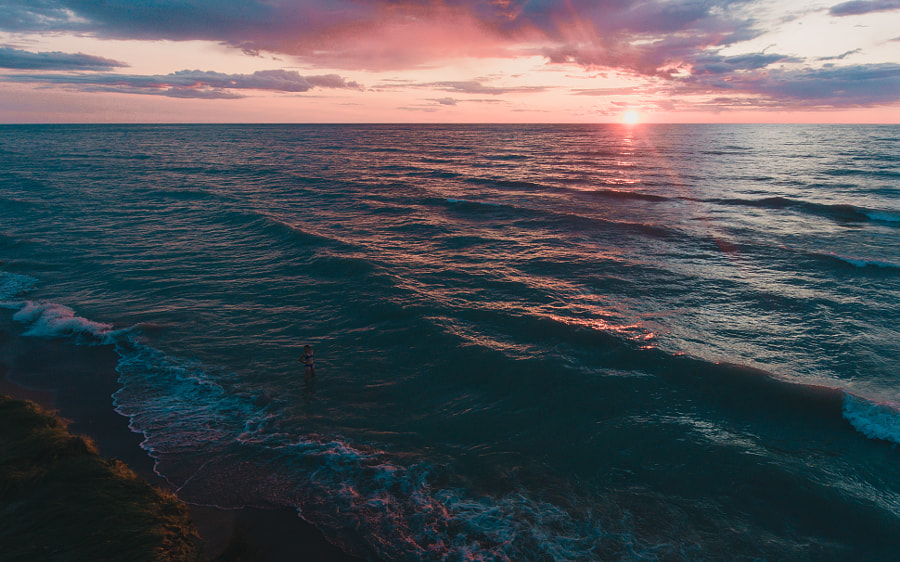I’ve been happily flying my DJI Phantom 4 for a while now, and it’s been mostly smooth sailing; controlling the drone has never been a problem for me. I configured the controller to match my gaming controls, and took to it like a fish to water. My skills flying virtual helicopters transferred remarkably well. I was a leaf on the wind. Perhaps, looking back, this was part of my problem—maybe I got cocky. Maybe I ran into some bad luck. Maybe I’m just not as good as I think I am. In any case, I’ve crashed my drone three times now while taking photos, and am here to share my crashing tips so that you don’t repeat my mistakes.
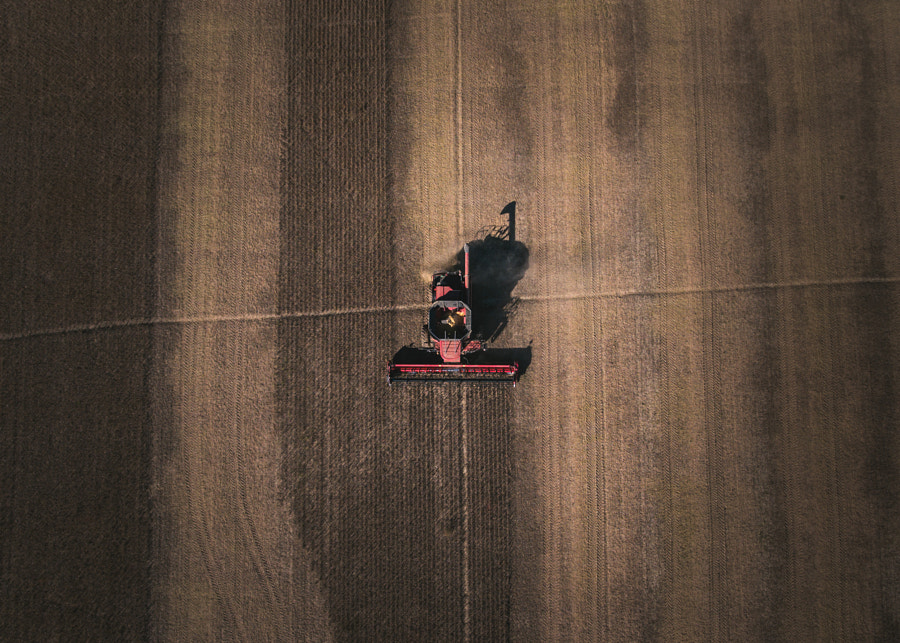
1. By flying directly into the only tree in sight
The first time I crashed my drone was a couple of months after I first picked up my Phantom 4. I was flying out in the county at my aunt and uncle’s, getting nice shots of combines at work, farm houses, and grain silos. As you can imagine, it’s mostly open space without many obstacles to worry about. As I brought my drone back to the house, I thought I would come in quick and fly around a bit to show off the drone to my family and their kids. In the process, I managed to clip the only tree in sight. My drone got caught in a branch and couldn’t escape. I had no choice but to power it down and hope for the best.
It bounced off of a few branches and came to rest about halfway down the tree. Never one to pass up an excuse to climb a tree, I got up there and managed to shake it out, with my cousin waiting to catch it on the ground. It had a few dents and some green stains, but otherwise it was still in perfect working order. Phew.
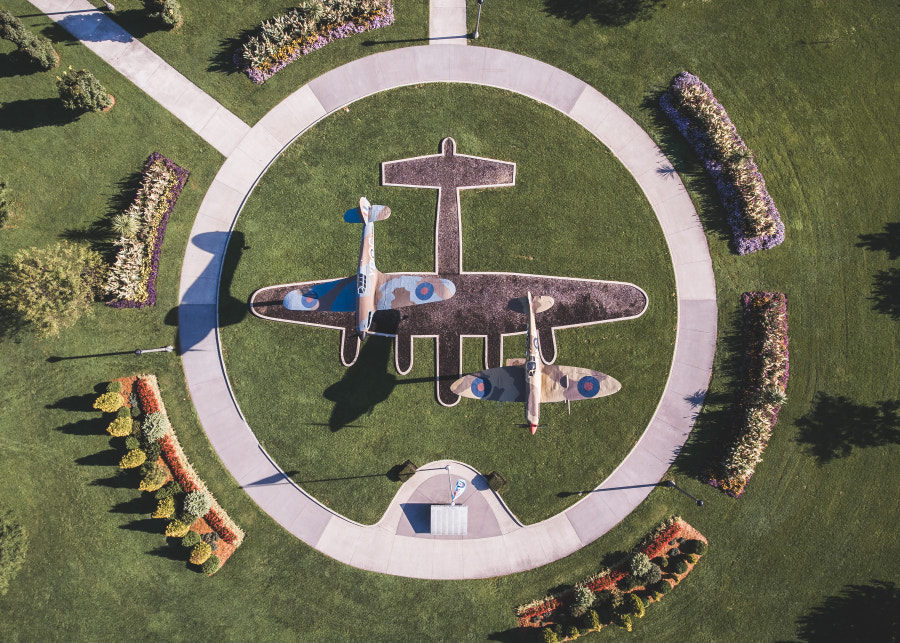
So, what happened?
I was in perfect control, or so I thought. As I flew back, I noticed that I was a little low and below the top of the tree, and my drone started to drift a bit towards it. No problem. I pushed the stick to move away, and…the drone flew directly into the tree. I had spun the craft around somewhere along the way and had lost track of its orientation.
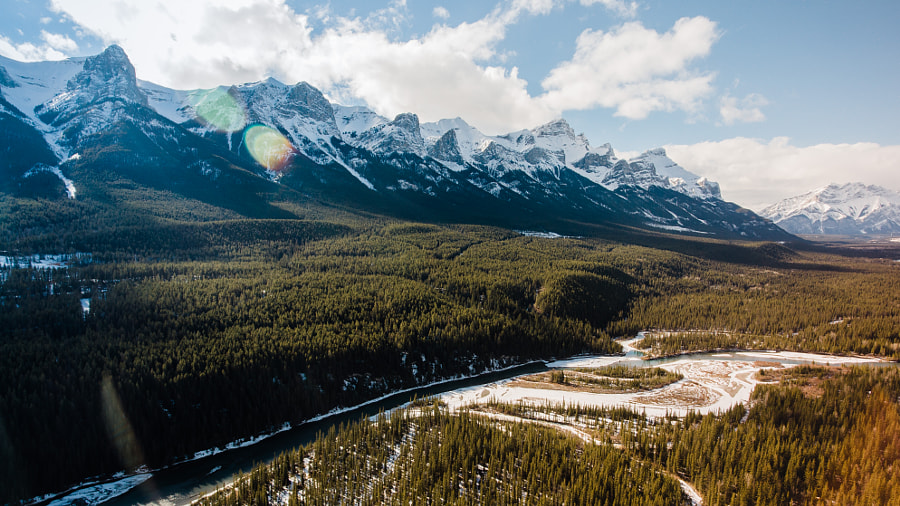
There are a few things I could have done to avoid this:
- Don’t try to show off with your drone. This is actually very hard to resist (at least for me).
- If you aren’t explicitly (and carefully) getting a low shot, always fly above the treeline.
- If you’re in this sort of trouble, your instinct should be to go up, not sideways.
- If your drone has something like a “course lock” mode, use it. Course lock will lock the orientation of your controller, meaning that no matter which direction your drone is facing, it will always move in the direction you push your stick.
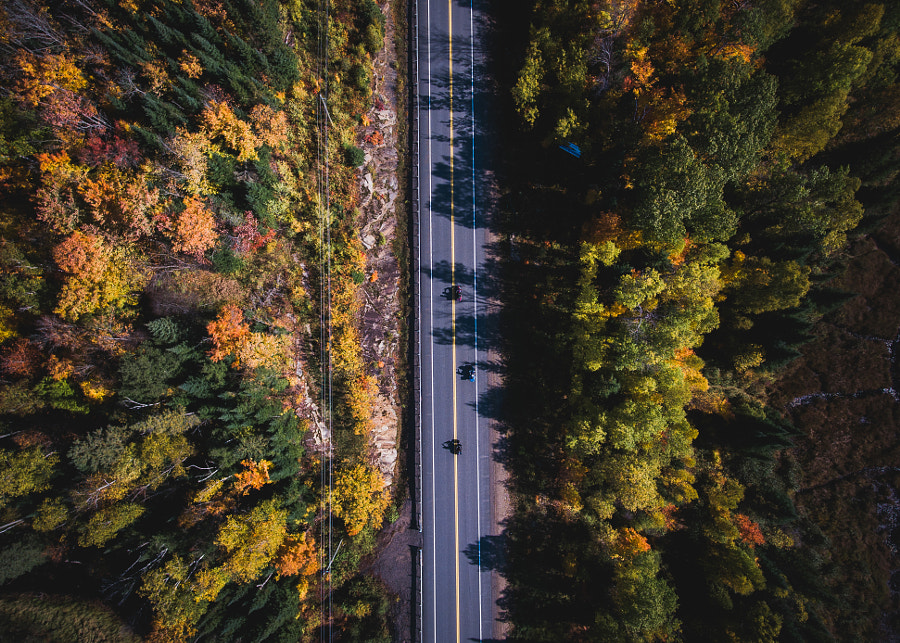
2. By clipping a tree while flying backwards down a road
The second time I crashed my drone, I was: flying backwards along a street lined with trees; just a few meters above the ground; trying to stay ahead of a sports car; flying with no clear visual on the craft. Now, I know what you’re thinking: that sounds awesome, and I don’t see what’s wrong with it at all. Well, you might be surprised to learn that this ended poorly, and I consider it in retrospect to have been incredibly stupid. Who knew?
The drone drifted to the side of the street (it can be quite hard to keep it flying straight back purely from the video feed), clipped a tree branch, and flew sideways at high speed directly into the ground. I am very lucky that it didn’t fly directly into someone’s window, or worse. Miraculously, although my poor drone looked a bit worse for wear, there was no serious damage.
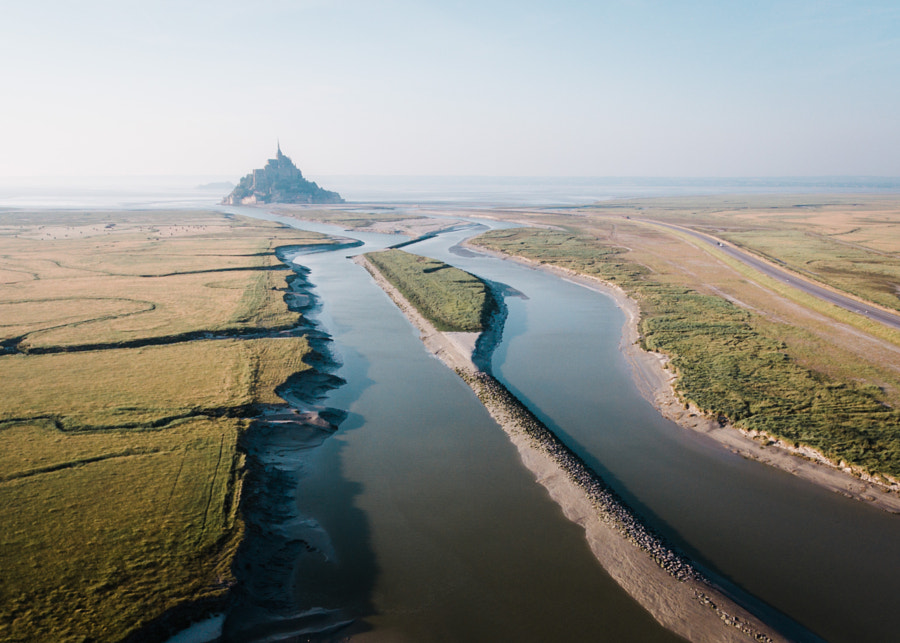
The lessons from this crash seem fairly obvious, but let’s run through them:
- Always have a good visual on your drone. Using the video feed is great for setting up a shot, but if you’re in a tricky situation, you need to be looking directly at the drone while you fly. You can always check the recording afterward to make sure you got the shot.
- Do a few low-speed practice runs first, to make sure you have the movements down and have a better understanding of what could go wrong.
- Fly slower, and speed the shot up a bit in post if you need to.
- Don’t try to capture a tracking video shot of a car driving towards the drone, at all. It’s one thing to put your drone in danger of destruction, but I could have easily caused damage to someone’s property, or even injured someone accidentally. It’s simply not worth it.
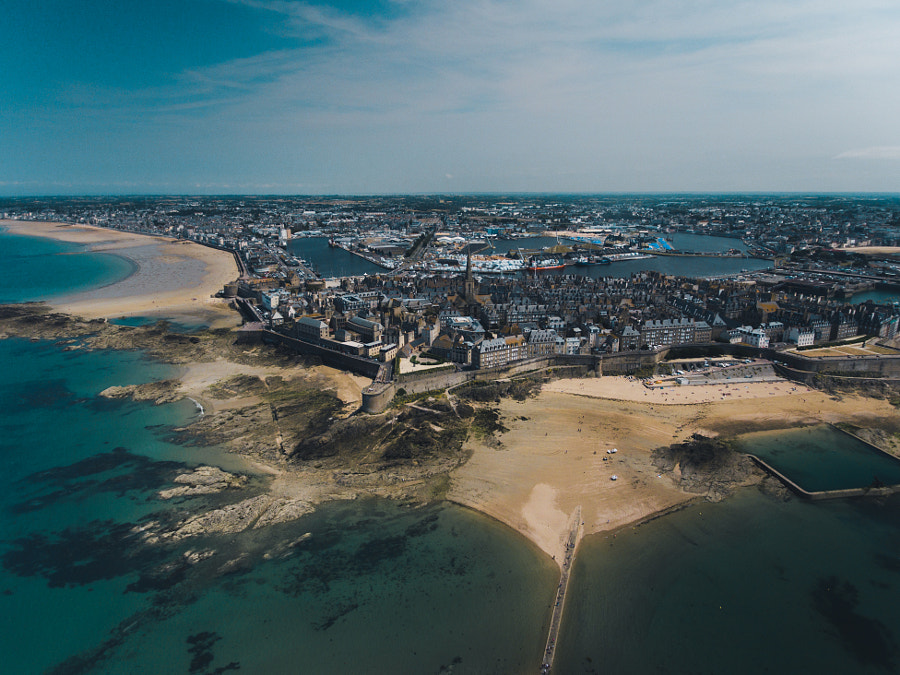
3. By flying directly into a centuries-old city fortress at high speed
The third time I crashed my drone was directly into the stone wall surrounding the city of Saint Malo, in France. I was a bit nervous to fly here in the first place, but couldn’t resist the opportunity. Nevertheless, I tried my best to avoid my drone being noticed. I took off from a large platform area along the top of the wall. After getting some lovely shots of the city from above, it was time to make my return. Rather than slowly come down from directly above and potentially attract a lot of attention, I thought I would come down over the water, fly up to the wall, and quickly come up and over to a landing. No big deal.
I brought down my altitude, and started heading quickly towards my position atop the wall. I had switched my drone into high-speed “sport” mode while getting into position, and flipped it back into normal mode to slow down a bit and re-enable forward collision detection. Or so I thought. To complicate things, it was very sunny and so I had a jacket over my head to be able to see my tablet screen, so I didn’t have a direct visual on my drone.
“Uh, you just flew right into the wall,” my brother solemnly informed me.
“Ha, no I didn’t, I’m looking at the wall right now on my screen — wait, now it says connection lost… uh…”, I replied, also solemnly.
How did we end up here?
When I thought I switched out of “sport” mode, I… well, I hadn’t. So I was hurtling towards the wall much faster than I thought, and with collision detection disabled. It’s hard to tell from the video feed exactly how fast you’re moving, and I had no visual of my drone since I had a jacket over my head to block the sun. A few short seconds later, my drone unsuccessfully attempted to breach the walls of Saint Malo. Luckily, it landed on a ledge at the foot of the wall, rather than directly in the ocean, and I was able to recover it.
The props were obviously destroyed, my ND filter was smashed, and the gimbal motor took a bit of damage. Somehow, it was still partially operational and capable of some rather unsteady-looking flight, but it definitely needed work. Luckily, it was nothing my local drone repair shop couldn’t fix.
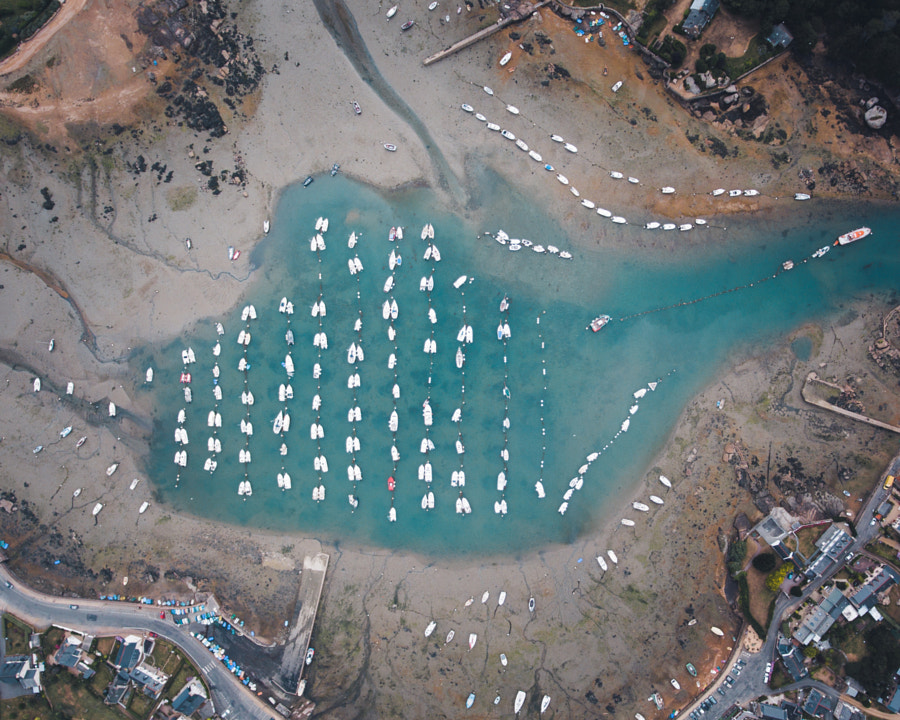
So, what did we learn?
- Always have a visual on your drone. More specifically, if you are coming down for a landing, especially at low altitude, you should be looking directly at your drone at all times, not at the video feed. If you need to be watching your feed to nail a shot, have a friend keep an eye on your drone to watch out for trouble.
- Don’t fly while distracted. As I was sending my drone hurtling toward its early demise, I was trying to get a jacket off of my head. Speaking of which, get a hood for your phone or tablet so you can see your screen in bright sunlight.
- Double-check which mode you’re in. At least on the Phantom controller, it can be fairly easy to lose track of whether you are flying in normal or sport mode. Double-check it.
- Take off and landing should be slow, controlled affairs. If you are in a situation where you think you will need to rush, or want to avoid being noticed while landing, this is a great sign that you should not fly from that location. Alternatively, being noticed while slowly landing your drone is a lot better than being noticed while attempting to use it as a battering ram.
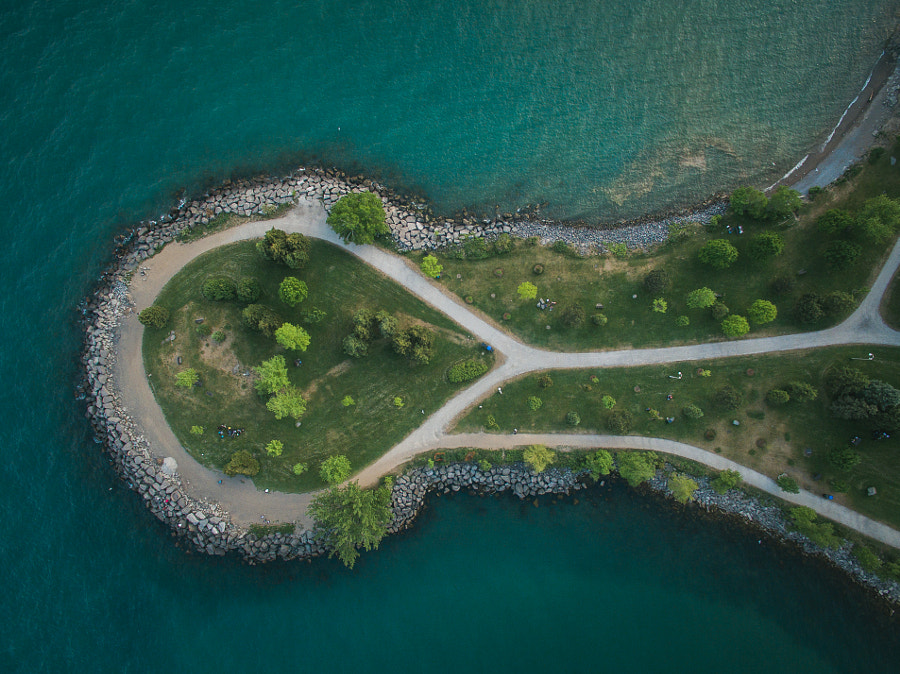
The moral of the story
The common themes across all of these incidents are probably overconfidence and impatience. Take your time, take precautions, and don’t do anything stupid. I’m not saying you can’t fly your drone under that picturesque footbridge for a great shot; after all, this is why we love to fly drones in the first place. I’m saying take your time to set up the shot, make sure you have a perfect visual on your craft, make use of the features of your drone like collision detection and course locking, and do a few low-speed practice runs first. And don’t get cocky.
